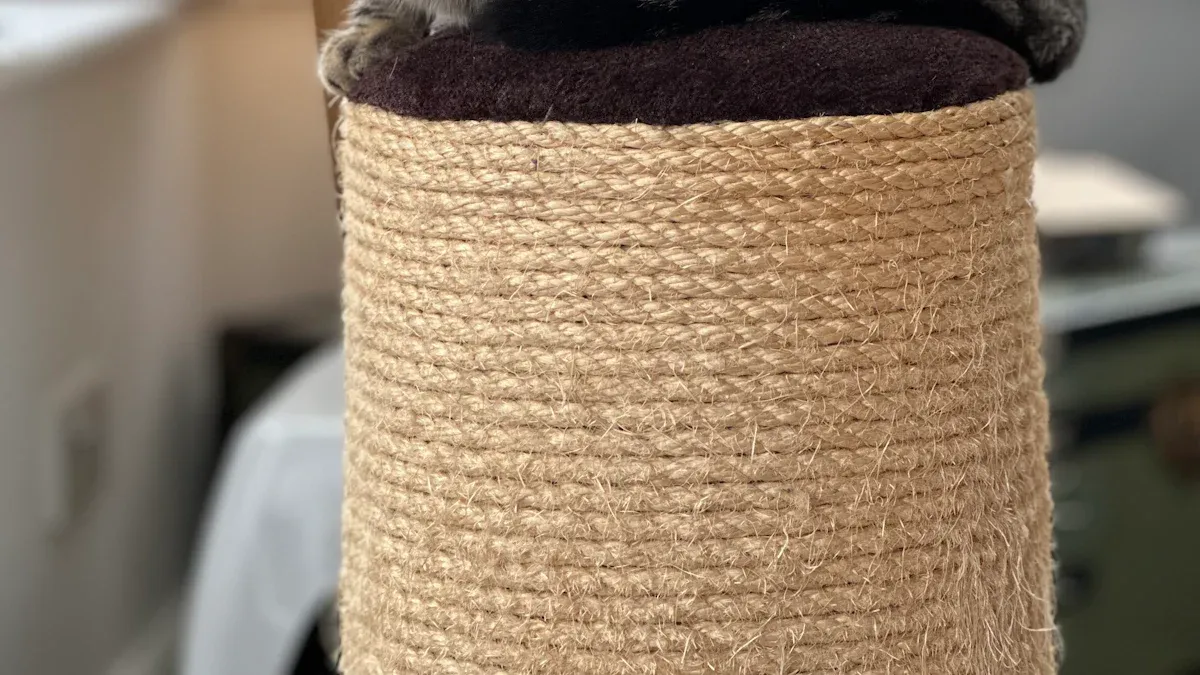Your cat needs more than food and a place to sleep. Cat trees help them use their energy and stay busy. These trees let them climb and scratch, which they love. It also gives them a space they can call their own. Buying one in 2025 shows you care about your pet's happiness.
Benefits of Cat Trees
Helping Your Cat Stay Healthy
Cats need exercise to stay fit and strong. Cat trees are great for this. They let cats climb, jump, and stretch. These activities help them stay at a good weight and build muscles. Unlike flat floors, cat trees have tall spaces. These spaces test your cat's balance and agility.
Fun fact: Cats love climbing! It helps them use energy and keeps their joints moving well.
A cat tree gives your cat a fun way to move indoors. This is helpful if they can’t go outside.
Keeping Your Cat’s Mind Busy
Cats are happiest when they have things to do. Cat trees have levels, hiding spots, and perches. These features keep cats curious and entertained. Exploring the tree feels like hunting or climbing in the wild.
You can make it even better by adding toys or treats. This turns the tree into a fun playground. A busy cat is happy and behaves well. A bored cat might scratch or act out.
Helping Behavior and Lowering Stress
Cat trees can improve how your cat acts. They give your cat a safe space to relax. This is very helpful if you have other pets. Cats don’t like sharing space, and this can stress them out.
With a cat tree, your cat has a place to climb and scratch. This means they won’t scratch your furniture as much. Cat trees also help cats feel calm. From a high perch, they can watch everything and feel in control.
How Cat Trees Address Natural Instincts

Supporting Climbing and Exploring
Cats are natural climbers. In the wild, they climb trees to escape predators, hunt, or simply observe their surroundings. A cat tree brings this instinct into your home. It gives your cat a safe and exciting way to climb and explore. The multiple levels and platforms mimic the experience of scaling real trees.
When your cat climbs, they strengthen their muscles and improve their coordination. It also keeps them entertained, reducing boredom. You’ll notice how much joy they get from reaching the highest perch and surveying their "territory." A cat tree isn’t just furniture; it’s an adventure waiting to happen.
Providing Scratching Surfaces
Scratching is more than a habit for cats—it’s a necessity. They scratch to sharpen their claws, stretch their muscles, and mark their territory. Without a proper outlet, your furniture might become their target.
Cat trees come with built-in scratching posts, often wrapped in sisal rope. These surfaces are perfect for satisfying your cat’s scratching needs. By providing this, you protect your furniture and give your cat a healthy way to express their instincts.
Tip: Place the cat tree in a spot your cat loves to hang out. This increases the chances they’ll use it for scratching instead of your couch!
Establishing Territory and Safe Spaces
Cats are territorial creatures. They need a space they can call their own. A cat tree offers just that. The elevated perches and cozy hideouts create a sense of security. Your cat can retreat there when they need alone time or feel stressed.
If you have multiple pets, a cat tree helps reduce conflicts. It gives your cat a high vantage point where they can observe without feeling threatened. This safe space improves their confidence and overall well-being.
Choosing the Right Cat Tree
Ensuring Stability and Safety
Your cat’s safety should always come first. A stable cat tree prevents accidents and gives your cat confidence to climb and play. Look for a tree with a wide, sturdy base. This keeps it from tipping over, even when your cat jumps or scratches. If you have a larger cat, choose a tree designed to handle their weight.
Tip: Test the tree’s stability by gently shaking it before buying. A wobbly tree can scare your cat and discourage them from using it.
Considering Size and Space
Before buying, think about where you’ll place the cat tree. Measure the available space in your home. If you live in a small apartment, a compact, vertical tree works best. For larger homes, you can go for a bigger tree with multiple levels and features.
Cats love having enough room to stretch and climb. Make sure the tree fits your cat’s size and activity level.
Selecting Materials and Design
The materials of the tree matter for durability and comfort. Sisal-covered posts are ideal for scratching, while soft, padded platforms provide cozy resting spots. Choose a design that matches your home’s style. Modern cat trees come in various colors and shapes, so you don’t have to sacrifice aesthetics.
Meeting Age-Specific Needs
Kittens need trees with lower platforms to prevent injuries. Older cats benefit from trees with ramps or easy-to-reach perches. Tailor the tree to your cat’s age and mobility to ensure they enjoy it fully.
Further Reading: How Cat Towers Enhance Your Cat's Physical and Mental Health








